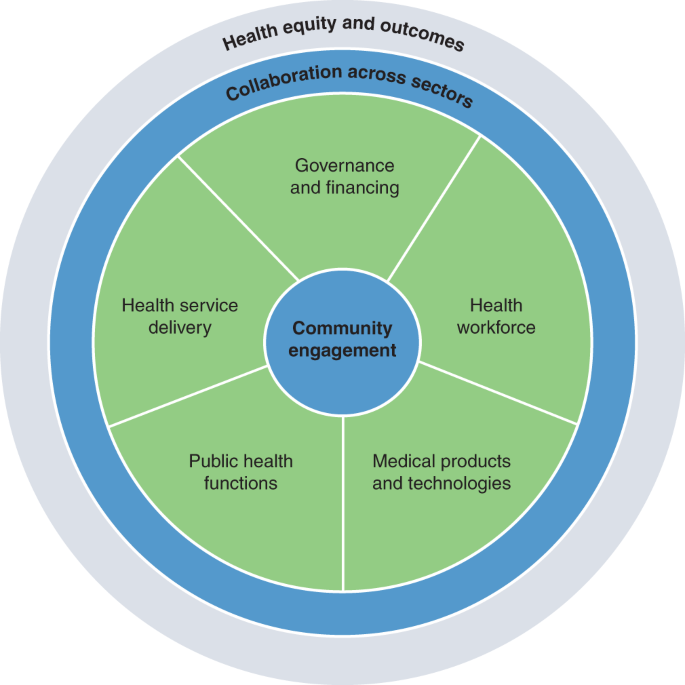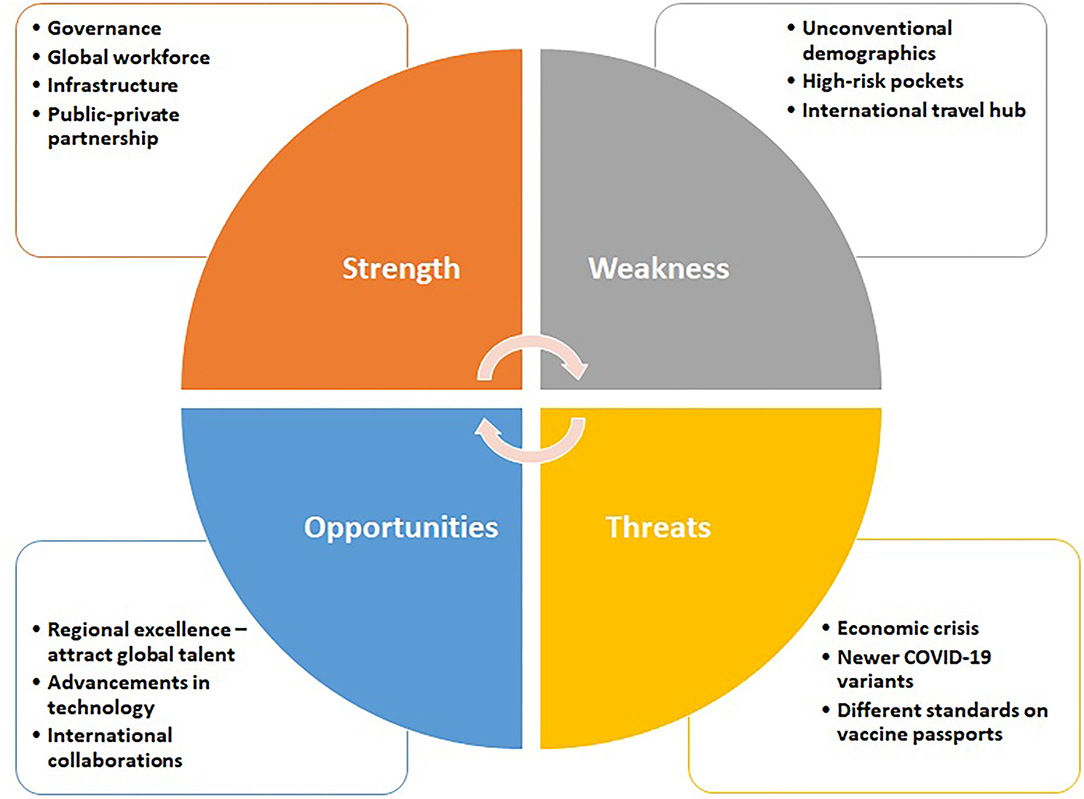Building Community Resilience: Navigating Pandemic Challenges

Introduction
In the face of unprecedented challenges brought on by the global pandemic, the concept of community resilience has become more crucial than ever. Building and strengthening the resilience of communities is not only a collective effort but a necessity for navigating the uncertainties that lie ahead.
Fostering Solidarity and Connection
At the heart of community pandemic resilience is the fostering of solidarity and connection among its members. Communities that come together, support one another, and maintain open lines of communication are better equipped to face the challenges presented by the pandemic. Social cohesion acts as a powerful buffer against the negative impacts of isolation and uncertainty.
Local Leadership and Empowerment
Resilient communities often have strong local leadership that empowers residents to actively participate in decision-making processes. By empowering individuals within the community, local leaders can tap into a diverse range of skills and perspectives, fostering a sense of ownership and responsibility that contributes to overall resilience.
Emergency Preparedness and Response
An integral aspect of community resilience is robust emergency preparedness and response mechanisms. Communities that have well-defined plans for emergencies, clear communication channels, and practice regular drills are better prepared to handle unexpected crises, ensuring a swift and coordinated response when needed.
Supporting Vulnerable Populations
In times of crisis, vulnerable populations within a community are often disproportionately affected. Building resilience requires a concerted effort to support and protect these groups. This can involve creating targeted support programs, providing access to essential resources, and ensuring that vulnerable individuals have a voice in community decision-making.
Adapting to Change and Innovation
Resilient communities demonstrate a capacity to adapt to change and embrace innovation. The pandemic has accelerated the need for creative solutions to new challenges. Communities that foster a culture of innovation can find novel ways to address issues, whether it’s supporting local businesses or adapting community services to the evolving needs of residents.
Collaboration with Local Businesses
Local businesses are the backbone of many communities, and their resilience is intertwined with that of the community itself. Collaborative efforts between the community and local businesses, such as supporting buy-local initiatives, can strengthen economic resilience. This symbiotic relationship contributes to the overall well-being of the community.
Crisis Communication and Information Sharing
Effective communication is a cornerstone of community pandemic resilience. Timely and accurate information helps residents make informed decisions, reduces anxiety, and ensures a unified response. Communities that establish reliable communication channels and actively share relevant information contribute to a sense of shared understanding and purpose.
Mental Health and Well-being Support
Prioritizing mental health and well-being is a crucial component of community resilience. Establishing support systems, providing access to mental health resources, and reducing the stigma around seeking help contribute to the overall health of the community. A mentally resilient community can better navigate the challenges posed by the ongoing pandemic.
Sustainable Community Practices
In the pursuit of resilience, communities must also consider sustainability. Practices that promote environmental sustainability, economic stability, and social equity contribute to long-term community well-being. A holistic approach ensures that the community is not only resilient in the face of immediate challenges but also prepared for a sustainable future.
Conclusion with Link
In conclusion, community pandemic resilience is a multifaceted endeavor that requires active participation from all members. Fostering solidarity, supporting vulnerable populations, and embracing innovation are just a few components of building a resilient community. For further insights into community resilience during the pandemic, visit The Healthy Consumer website. Strengthen your community, stay resilient.
Navigating Crisis: Effective Management During the Pandemic

The Imperative of Pandemic Crisis Management
In the face of a global pandemic, effective crisis management is paramount to navigate uncertainties and mitigate the impact on individuals, communities, and organizations. This article explores the essential components and strategies for adeptly managing crises during these challenging times.
Understanding the Dynamic Nature of Pandemic Crises
Pandemic crises are dynamic and multifaceted, requiring a nuanced understanding of their evolving nature. From public health challenges to economic disruptions and social impacts, crisis management must encompass a comprehensive perspective to address the diverse aspects of the crisis.
Developing a Robust Crisis Response Plan
A foundational element of pandemic crisis management is the development of a robust response plan. This plan should outline clear roles and responsibilities, communication protocols, resource allocation strategies, and contingency measures. A well-prepared response plan forms the basis for swift and coordinated actions in times of crisis.
Effective Communication: A Cornerstone of Crisis Management
Communication is central to crisis management, particularly during a pandemic. Timely, transparent, and accurate communication builds trust and ensures that individuals and stakeholders are well-informed. The dissemination of vital information about safety measures, updates, and support resources is crucial for effective crisis response.
Coordination and Collaboration Across Sectors
Pandemic crises necessitate collaboration across various sectors, including healthcare, government, businesses, and communities. Coordinated efforts enhance the efficiency and effectiveness of crisis management. Partnerships between public and private entities, as well as international collaboration, contribute to a more resilient response.
Prioritizing Public Health and Safety Measures
Protecting public health and safety is paramount in pandemic crisis management. Implementing and enforcing measures such as social distancing, testing, contact tracing, and vaccination campaigns are critical components. Prioritizing these measures contributes not only to immediate crisis response but also to long-term resilience.
Addressing Economic Impact Through Strategic Measures
The economic fallout from a pandemic requires strategic measures to alleviate its impact. Governments and organizations may implement stimulus packages, financial support, and economic recovery plans. Balancing the economic considerations with public health priorities is essential for comprehensive crisis management.
Supporting Vulnerable Populations and Communities
Vulnerable populations often bear a disproportionate burden during crises. Crisis management strategies must include targeted support for these communities, addressing their specific needs and challenges. This includes access to healthcare, economic assistance, and social services tailored to vulnerable demographics.
Adapting Technology for Crisis Response
The integration of technology plays a pivotal role in crisis response. From data analytics for informed decision-making to the use of digital platforms for communication and coordination, technology enhances the efficiency and reach of crisis management efforts. Embracing innovation is key in navigating a rapidly evolving crisis landscape.
Evaluating and Learning from Crisis Responses
A critical aspect of crisis management is continuous evaluation and learning. After the initial response, assessing the effectiveness of measures, identifying areas for improvement, and incorporating lessons learned into future crisis plans contribute to adaptive and resilient crisis management.
Pandemic Crisis Management: A Collective Responsibility
In the face of a pandemic crisis, the responsibility for effective management extends to individuals, communities, organizations, and governments alike. A collective commitment to adhering to safety measures, supporting one another, and actively participating in crisis response initiatives is pivotal for overcoming challenges.
Explore More about Pandemic Crisis Management
Stay informed about pandemic crisis management strategies and insights at Pandemic Crisis Management. Together, let us navigate these challenging times with resilience, adaptability, and a shared commitment to overcoming crises.





